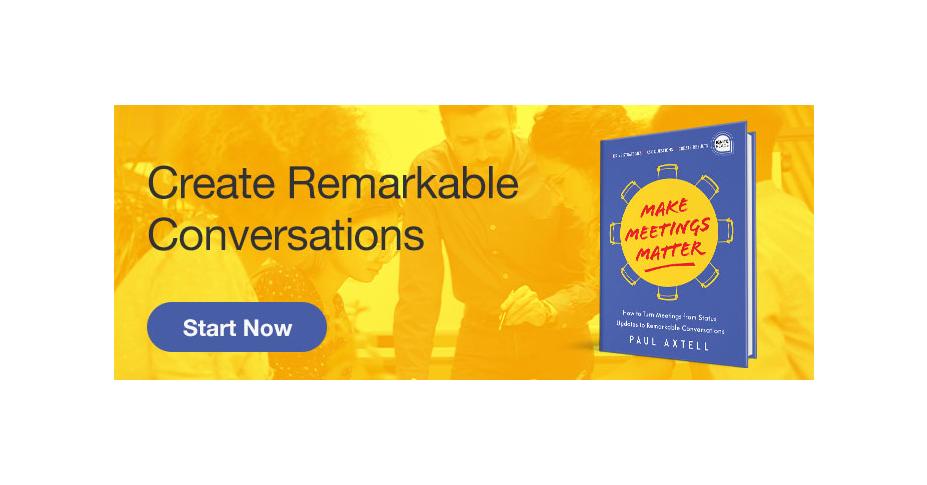Last year, I was given an opportunity to review the data from research on meetings conducted by an online scheduling platform, Doodle. The report offered compelling data, and I’ll share (with permission) the findings behind three of the most common complaints about meetings that might lead you to adjust some of your meeting practices.
1. Busy professionals are more concerned about the quality of the meeting attendees than they are the meeting format because they felt that irrelevant attendees slowed progress.
Eight or fewer participants is preferred for meetings. Invite only those people required to accomplish what you have on the agenda. Find other ways to inform and engage people who are not necessary. Of course, people want to be included and often get value out of meetings. The point is to be deliberate about inviting rather than just letting your group size swell without being thoughtful about who needs to attend.
Management consultant Margaret Wheatley talks about small groups of people being able to make a big difference, and she uses the question, “What matters and who cares?” to help groups define their purpose. If you limit your meetings to discussions about what matters, your meetings will have more impact. If you invite only those most concerned, the conversations will be focused and productive. And you will also protect people’s time—making sure the investment value is high for those attending and giving those not needed in the meeting more time for individual work.
-taking phone calls or texts
-people who interrupt others
-people who don’t listen to others
-arriving late or leaving early
-people who talk about nothing for long periods of time
You have two primary ways of managing behavior. First, ensure that the top people and most respected members of the group role model the behavior you want. Identify these people, take them to coffee, and ask for their support in improving the experience of the meeting for everyone.
Second, spend a few minutes up front asking the group to be attentive and supportive of everyone who speaks.
Some meetings will benefit from establishing guidelines about technology, interrupting, and side conversations—anything that detracts from the meeting’s efficiency. Don’t have a long list of guidelines, just three or four that the group agrees would help.
You might use the graphic from Doodle below as an opening for your group to express what they would like to be true about meetings that isn’t true now.

The Doodle Meeting Report 2019,
created by online scheduling platform Doodle through research with 6,026
professionals in the UK, Germany, and the USA.
3. Poor reception on conference calls and video meetings.
This third point in the report is concerning because the vast majority of respondents experienced poor connections. When people are attending virtually, that leads to multitasking and half-hearted participation—never a plus if you want engagement and alignment. The experience of folks who are not in the immediate meeting room is often far less than for those in the room. Ask your people what support they need in getting the technology required to participate effectively.
With the globalization of business, virtual meetings are becoming the norm for many conversations. Video conferencing technology has made it possible for virtual meetings to include many elements of face-to-face meetings, but not if the technology isn’t functioning for everyone.
-Paul Axtell, author of Make Meetings Matter
For more on ways to transform meetings, check out Make Meetings Matter>>

